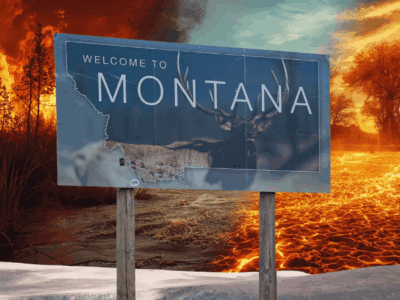No pre-contamination chicken litter injunction
In a split decision, the Tenth Circuit has upheld a district court decision denying a preliminary injunction sought by the state of Oklahoma against Tyson Foods and other large-scale Arkansas-based poultry producers in an unusual Resource Conservation and Recovery Act case.
RCRA allows citizen suits against anyone involved in the “handling, storage, treatment, transportation, or disposal of any solid or hazardous waste which may present an imminent and substantial endangerment to health or the environment.” Oklahoma filed suit in 2005, and in 2007 sought an injunction pending resolution of the complaint to prevent the application of chicken litter, which is used chicken bedding including chicken feces, to land as fertilizer in the Illinois River watershed. Chicken litter contains bacteria that can cause human diseases. Oklahoma claims that poultry operations in the area produce about 345,000 tons of chicken litter every year, and that land application of that litter threatens to contaminate waterways that are heavily used for recreation.
The merits of the case have not yet been addressed (the wheels of justice do indeed turn slowly). Oklahoma had appealed the trial court’s refusal to enjoin land application of the litter pending resolution of the claim. By a vote of 2-1, the Tenth Circuit upheld that decision. The majority determined that the trial court was justified in finding that the state had not shown that current contamination of waters in the area was linked to chicken litter, given the many other sources of potential contamination in the area and the defendant’s argument that the litter was treated to kill bacteria. It criticized the state for failing “to conduct a fate and transport study to establish that any surviving bacteria from poultry litter actually reached the waters” of the region.
Dissenting, Senior Judge Ebel disagreed with that approach. He noted that RCRA requires only that the plaintiff prove that storage, treatment, or disposal of waste “may present” an imminent and substantial endangerment. That standard, he argued, requires only a threat of harm, not a showing that harm had occurred. It could be satisfied by a showing that the litter contained harmful bacteria that could be washed into the waterways, even without proof that they already had been. Ebel quoted the leading Supreme Court case on RCRA, Meghrig v. KFC Western, 516 U.S. 479 (1996), which described substantial endangerment as “reasonable cause for concern that someone or something may be exposed to risk of harm by release, or threatened release, of hazardous substances in the event remedial action is not taken,” and told courts to err on the side of “protecting public health, welfare and the environment.”
Since Oklahoma had introduced
credible testimony tending to show plausible pathways by which the constituents of land-applied poultry litter, including bacteria, could reach both the surface waters and the groundwater of the IRW, thus putting those waters at risk of contamination [,]
Judge Ebel would have required the trial court to explain why it was not persuaded there was a risk of harm, or if it acknowledged such a risk why it concluded that the state had failed to meet one of the other prongs of the “rigorous” test for a preliminary injunction. In other words, the dissent was not saying it thought Oklahoma should necessarily have gotten an injunction, just that its failure to prove that chicken litter had already contaminated waterways was not a good basis for rejecting the motion for an injunction.







Reader Comments